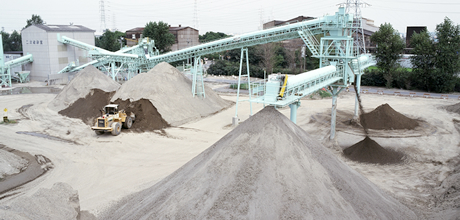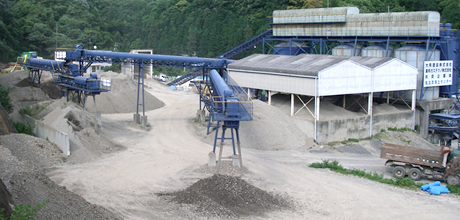
The recycling rate for construction surplus soil excavated from underground pipe work and other civil engineering work is approximately 50%. Unrecycled soil is taken to landfill sites. One reason for this unrecycled soil is that construction surplus soil is largely soft. Such untreated soil, if used as it is, might cause ground subsidence. In 1992, as a solution to this challenge, Toho Gas Techno commercialized the first stationary soil modification plant in the Chubu region in order to recycle construction surplus soil free of concerns.


| 1979: | Toho Gas Co., Ltd. commenced studying recycling construction surplus soil. |
|---|---|
| 1986: | Toho Gas Co., Ltd. commenced operating the Meinan Soil Modification Center (as the first of such facilities in Chubu region). |
| 1992: | Tokai Paving Co., Ltd. (present Tokai Gas Techno Co., Ltd.) took over the soil modification center and began operating it on a commercial basis. |
| 2011: | The Meinan Soil Modification Center was certified as a soil modification plant by the Greenery Planning and Civil Engineering Department, Nagoya Municipal Government. |
| 2018: | The cumulative amount of modified soil shipped since commercialization reached 6,000,000 tons. |
| 2020: | The Meinan Soil Modification Center was certified as a roadbed materials plant by the Greenery Planning and Civil Engineering Department, Nagoya Municipal Government. |


| 2003: | Toho Gas Techno commenced operating the Northern Nagoya Soil Modification Center as a joint project with Taiyu Kensetsu Co., Ltd. |
|---|---|
| 2011: | The Northern Nagoya Soil Modification Center was certified as a soil modification plant by the Greenery Planning and Civil Engineering Department, Nagoya Municipal Government. |
| 2012: | The cumulative amount of shipped modified soil reached 1,000,000 tons. |
| 2020: | The Northern Nagoya Soil Modification Center was certified as a roadbed materials plant by the Greenery Planning and Civil Engineering Department, Nagoya Municipal Government. |

Modified soil recycled from excavated construction surplus soil is widely used as a substitute for mountain sand. It helps solve various problems..
- 1. The use of modified soil prevents environmental damage resulting from taking sand from mountains. Efficient use of construction byproducts contributes to building a recycling-oriented society.
- 2. It has recently become difficult to provide quality mountain sand. In contrast, modified soil offers quality and can be supplied stably.
- 3. Mountain sites for taking sand for use as backfill soil and landfill sites for construction surplus soil have become more and more remotely located each year. Soil modification reduces transportation distances for construction surplus soil and backfill soil.
(This will lead to reduced carbon dioxide emissions during transportation and the cost of transportation.)






